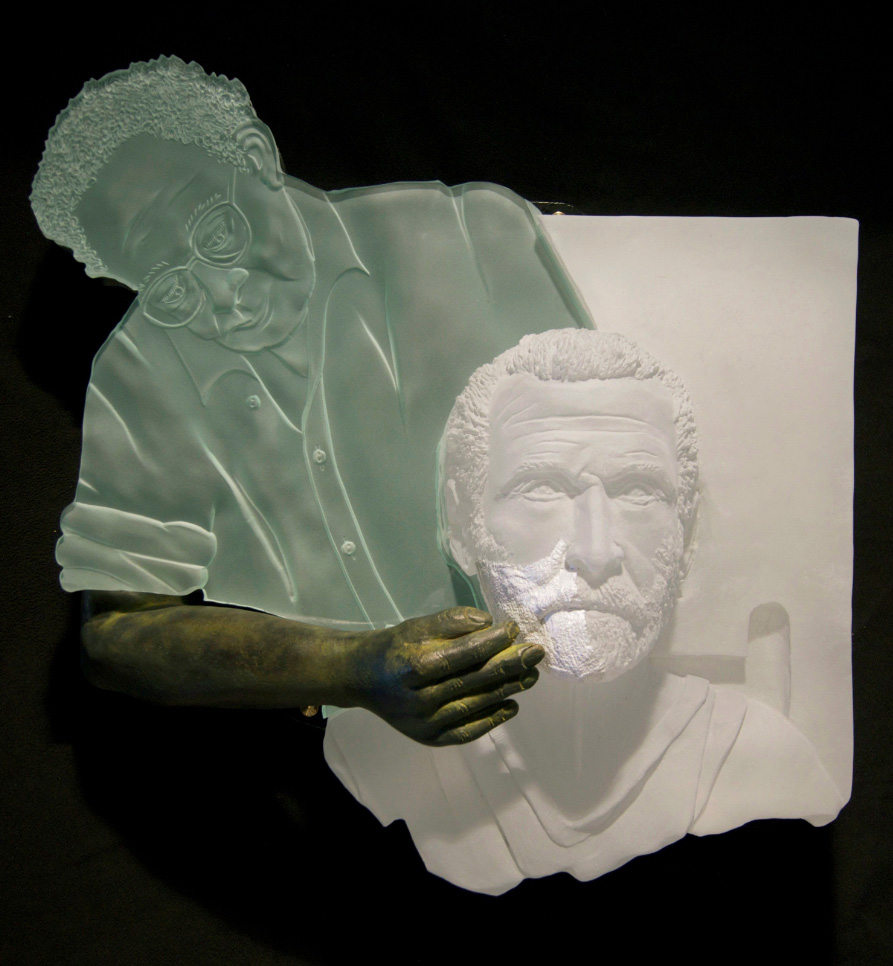I Dreamt I was a model for George Segal
Materials Sandblasted glass, cast glass, and bronze
I hadn’t done a self-portrait in almost twenty years. When thinking about it, however, I did not want to do a piece specifically about me, so I put it in the context of posing for one of my earliest art heroes.
In the 1960’s when I was in college at the University of Illinois, George Segal came and gave a lecture which made an enormous impression on me. At the time although I was a student in the Agriculture school, my interests were in theatre design and sculpture.
During the talk, I vividly remember a slide of a guy hanging letters on a marquee at a movie theatre; this sculpture “Cinema” from 1963 was a revelation because it bridged the gap, at least for me, between my two interests. From that time on my two biggest contemporary sculptural influences were Segal and Ed Keinholz. I went on to work in the theatre and television for the next ten years as a designer, master carpenter, and prop builder in order to earn money to continue to make sculpture.
My guide as a young man, the stage set designer Robin Wagner took me under his wing as his first assistant in 1965, gave me a very sage piece of advice. He said that the theatre was a group sport involving producers, directors, actors, and fellow designers (lighting and costumes) and that one had to bend their ideas as a set designer to mesh with everyone in order to make a production work. I was always a hard head trying to assert my ideas and not being very willing to compromise. For that reason, he advised me to stick to sculpture where I had full control. I am forever grateful.
We skip now to 1975, I am in Rome as a recipient of the Prix de Rome in sculpture. I get a call from the cultural attaché at the American Embassy. Would I be so kind as to accompany George Segal for a number of days while he worked on a series of “blue jean prints” My task was to help navigate Rome and to aid with the language. This was very exciting and definitely one of my fond memories. We do not often get to spend time with our heroes.
For the next twenty-five years Segal continued to make his full body and bas-relief plaster bandage wrapped figurative sculptures often adding real objects to complete the scene. He died in 2000.
